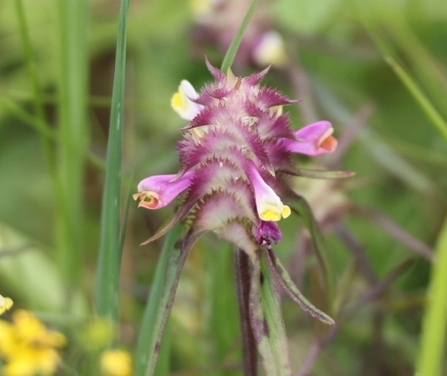The Essex BioBlitz aims to capture data on how climate change is impacting our local environment, by documenting wildflowers across the county. In April of this year, Essex Wildlife Trust and the University of Essex urged the public to become citizen scientists and take part in their campaign.
Essex goes wild for wildflowers – all in the name of climate change
James Adler

Crested cow-wheat
Since 1 April, the Essex BioBlitz has seen over 10,000 observations, surpassing the original target of 2,000 fivefold. Over 450 individuals have participated in this citizen science survey already, but Essex Wildlife Trust is encouraging the county to keep counting.
The project is collecting data on flowering plants when they’re in bloom – a key indicator to determine how timings are changing in the environment. Rare and unusual wildflower species have been documented on the app, with notable additions including crested cow-wheat, an endangered plant only found in East Anglia, lizard orchids and hedge woundwort.
The citizen science project remains open to members of the public across Essex who would like to contribute. Participants are asked to download the free app iNaturalist and take photos of flowering plants each week, uploading those to the app. The project will run until Friday 30 September.
Bailey Tait, Campaigns Officer at Essex Wildlife Trust, says of the achievement:
“The Essex BioBlitz is not only helping to gather data, but it is helping the public to engage with local wildlife and inspire a love of nature. We are thrilled to know so many people are behind us, helping to understand climate change. Reaching 10,000 observations is a great achievement for us all. We are hoping that with the warmer weather, people will continue to spend time outdoors and document wildflowers where they live.”
Pascale Muir, a campaigns volunteer for Essex Wildlife Trust, talks about how the public can learn more about local wildlife by participating in the campaign:
“I am seeing so much more in the verges and hedgerows and working hard on remembering all those wonderful wildflower names. Wouldn’t it be brilliant if we all knew our bedstraw from our kidney vetch once again, to keep the wonder and appreciation of nature alive?”
David Clark, Postdoctoral Research Fellow (Institute for Analytics and Data Science) School of Life Sciences from the University of Essex, says:
"As we approach the halfway point of the Essex BioBlitz, I have been staggered by the number of observers taking part and the number of observations they have submitted. To reach more than 10,000 observations is a huge achievement and I'm extremely grateful to all that have taken part so far. It will be very exciting to see how this number continues to change throughout the rest of the project, and I'm very much looking forward to seeing what these data tell us about how climate change is already affecting nature here in Essex."
